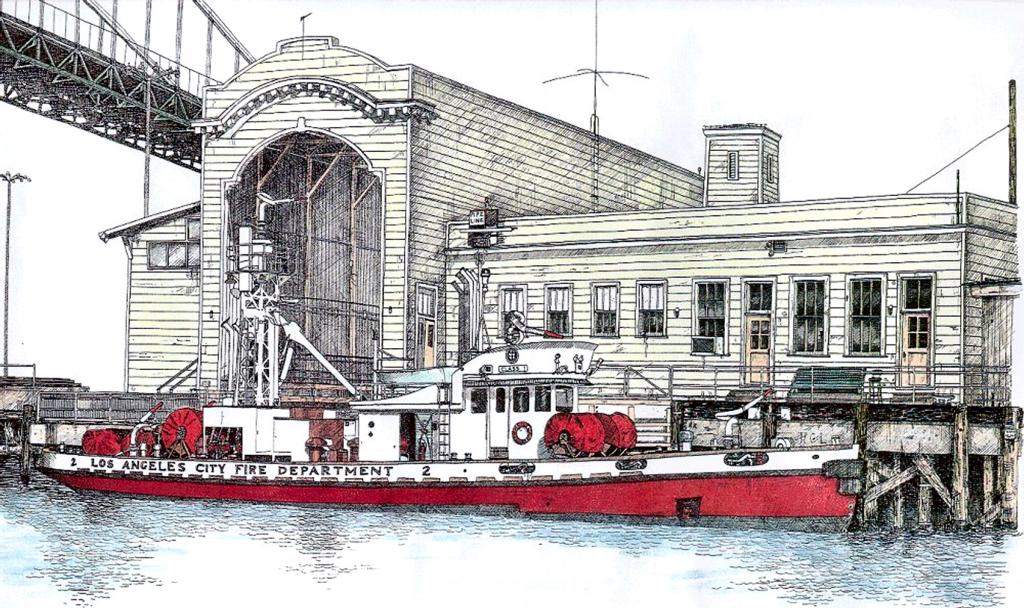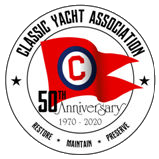Historical Summary:
On May 6, 1924 voters approved a $400,000. bond issue for construction of a fireboat, a station to house it and auxiliary apparatus.
Following completion of L. E. Caverly's designs dated January 31, 1925, a $214,000 contract was awarded to the Los Angeles Shipbuilding and Drydock Corp. (Todd Shipyard) in San Pedro. The contract called for an October 1, 1925, delivery date. At 10:25 a.m., October 25, 1925, Mrs. Ralph J. Scott christened Los Angeles City No. 2 by breaking a bottle of fire-extinguishing foamite across the bow.
Commissioned December 2, 1925 the Los Angeles City No. 2 went into service 25 days later with a crew of 14, including a captain, a pilot, a mate, two engineers and nine firemen.
The triple screw, white-painted fireboat was riveted steel construction. Her length is 99.3", beam 19-feet, depth of hold 9-feet, 152 gross tons and fuel capacity 2156 gal.
Originally the Los Angeles City No. 2 was powered by seven 350-horsepower, 6-cylinder in-line Winton gasoline engines. Three of these Wintons drove the center, port and starboard propellers for a top rated speed of 17 knots (the fastest fireboat afloat). The four other Wintons operated the forward-mounted pumps. Increased pumping capacity resulted from the dual capability of the two wing propulsion engines when they were switched from propulsion to pumping mode. There are six Byron Jackson four-stage centrifugal pumps mounted in pairs forward of the propulsion system. Each is rated at 1700 G.P.M. at 200 psi., for a total output of 10,200 G.P.M.
In 1945 the seven Winton propulsion engines were replaced by Hall Scott engines. Two 625 H.P. V-12 Hall Scott Defenders drive the outboard screws. A 275 H.P. 6-cylinder in-line Hall Scott Invader drives the center screw.
LISTED ON THE NATIONAL REGISTER OF HISTORIC PLACES, REF. NO. 89001430,
DESIGNATED A NATIONAL HISTORIC LANDMARK, 6/30/89.
National Park Service - Maritime Heritage Program


 This vessel is registered with CYA as an Honorary Vessel. Honorary Members are vessels or organizations that have been nominated by a CYA Fleet, and then approved by the CYA Board of Directors, for their historical significance or contribution to classic yachting.
This vessel is registered with CYA as an Honorary Vessel. Honorary Members are vessels or organizations that have been nominated by a CYA Fleet, and then approved by the CYA Board of Directors, for their historical significance or contribution to classic yachting.